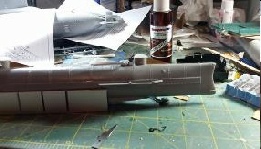
Building submarines isn’t easy nor tidy — even when dealing with models. Here is one of my projects to illustrate the intricate steps in creating one of these boats.
This boat is close to my heart and my home. The CSS Hunley
It takes time and patience, because each piece is custom made and check carefully for historic accuracy.
You can order any boat and it is 100 per cent handmade, truly a “unique” piece of military art and history
Steel used to make air intake tubes. .05 sheet brass used for cutwaters. Stainless .003 used for working hatch hinges. 1175 steel rivets installed. Big thank you to SCALE HARDWARE for supply of scale rivets.
I’ve visited this boat several times (it’s housed less than a mile from my home), and I have come away astounded after each visit at the mechanical ingenuity it took to build it during the Civil War.
The boat is ripe with history.
The boat officially is the H. L. Hunley, often referred to as Hunley. It was a submarine of the Confederate States of America and played a small part in the American Civil War. Hunley demonstrated the advantages and the dangers of undersea warfare.
She was the first combat submarine to sink a warship (USS Housatonic), although Hunley was not completely submerged and, following her successful attack, was lost along with her crew before she could return to base. The Confederacy lost 21 crewmen in three sinkings of Hunley during her short career.
She was named for her inventor, Horace Lawson Hunley, shortly after she was taken into government service under the control of the Confederate States Army at Charleston, South Carolina.
Hunley, nearly 40 feet (12 m) long, was built at Mobile, Alabama, and launched in July 1863. She then was shipped by rail on August 12, 1863, to Charleston. Hunley -
She sank again on October 15, 1863, killing all eight of her second crew, including Horace Hunley himself, who was aboard at the time, even though he was not a member of the Confederate military.
Both times Hunley was raised and returned to service.
On February 17, 1864, Hunley attacked and
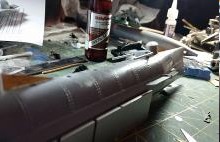

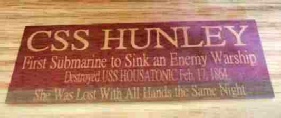
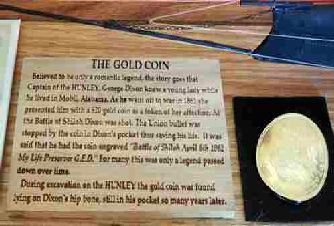
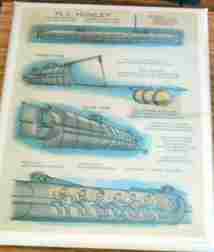
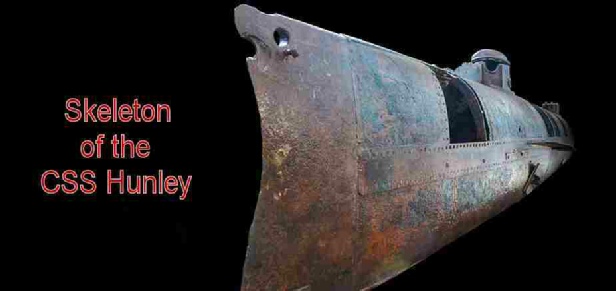
|
CSS HUNLEY |
